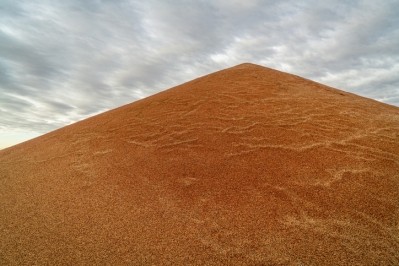USDA farmer support initiative 'does not capture the real-time impacts of trade disruptions on our markets'

The association sent an open letter to the USDA last week asking for consideration as it moves toward the second set of payments through its Market Facilitation Program (MFP) for farmers hurt by tariffs.
The initial MFP was launched by the USDA in September as an aspect of the multi-pronged support program was intended to aid producers of several crops, including feed ingredients like corn, sorghum and soybeans, along with hog and dairy producers.
The program set different prices for selected crops facing market uncertainty and low prices.
The NCGA has been having an ongoing discussion with the USDA since the initial program launched, said Lesly McNitt, NCGA director of public policy for trade and biotechnology.
’Corn prices have fluctuated and have declined pretty significantly as a result of trade uncertainty,” she added.
“Initially, NCGA went to the USDA when it made clear that trade relief would be available,” she told FeedNavigator. “Our analysis showed that the price of corn declined by an average of $0.44 a bushel or about 6.3bn hit to corn farmers. We made the case then that the impact from trade uncertainty should be taken into account.”
Market and sales for the feed ingredient remain the priority for producers and some recommendations regarding policy that would support market-driven or market-oriented responses also were requested at that time, she said.
“Then we made some more specific requests with respect to the trade mitigation plan that USDA was implement,” she added.
For corn producers, the mitigating payments in the initial program were $0.01 per bushel, said McNitt.
“That $0.01 per bushel triggered a series of follow-up conversations with USDA to better understand what it factored in and what its methodology was for coming up with what we felt and what we were hearing from our membership was definitely an insufficient level of relief for the economic impact they are experiencing."
“Farmers are really hurting right now and $0.01 per bushel felt like adding insult to injury,” McNitt said. “As we learned more about USDA’s the methodology, [we saw] there were some insufficiencies there – it doesn’t take into account real-time market impacts and it’s a pretty narrowly scoped methodology.”
The letter addresses several of those points as USDA is considering a second set of payments set for December.
Market facilitation and request details
The Trump administration has made progress on some areas including the effort to establish a revised trade agreement with Canada and Mexico and develop trade negotiations with Japan, said Lynn Chrisp, NCGA president in the letter. However, the potential economic benefits take time to develop.
“I continue to hear from farmers who are disappointed in USDA’s approach to calculating the first round of MFP payments because it was too narrow in scope and did not capture the real-time impacts of trade disruptions on our markets,” he said in the letter.
In the request letter, the association asked for the USDA to reconsider the data used to calculate payments for corn producers.
“A big part of the corn industry’s export strategy is value-added products such as ethanol and distillers dried grains with solubles, DDGS,” said McNitt. “Those were things we asked USDA to take into consideration for the second tranche of payments … we’d like them to address that deficiency and capture a more realistic scope of how corn farmers are being impacted.”
Additionally, the producer organization is asking for an alternative system for farmers to report their 2018 production.
The payment rates are currently based on production in 2018, said McNitt. However, feed crop producers in the US have been managing several weather-related disasters including drought in several states and hurricane damage in the southeast.
“Those farmers then are penalized twice – they’re dealing with revenue losses as a result of markets reacting to the trade uncertainly and they’re also dealing with production losses,” she said. “They’re not getting paid on those crops and those crops aren’t qualifying for MFP relief.”
At this point the NCGA has received no official response to its requests, she said. “We’ve had good back and forth good dialogue, good information sharing but we haven’t received any word on a final decision on the second tranche of payments,” she added.












